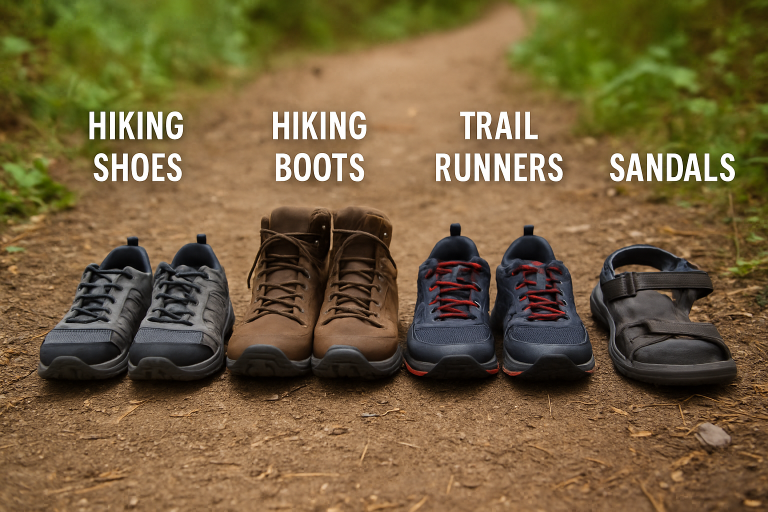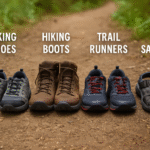Embarking on new trails or conquering fresh peaks begins with choosing the right footwear, arguably the most crucial piece of your hiking gear. The right shoes aren’t just about style or brand—they affect your comfort, safety, and ability to tackle challenging conditions.
With numerous options available on the market, finding the right hiking footwear to suit your needs can seem daunting. By narrowing your focus to your typical hiking style, terrain, and priorities—whether durability, water resistance, support, or lightweight comfort—you’ll ensure each step is a step toward an enjoyable adventure.
Understanding Your Hiking Needs
Choose hiking footwear based on your typical adventures. Day hikers on well-groomed trails need different support than backpackers tackling rocky or slippery terrain. For half-day moderate trails, lightweight shoes are enough. For technical terrain with a loaded backpack, sturdy boots with ankle support are better. Consider your environment—dry or humid—and your hiking goals. Match your footwear’s technology and construction to your terrain and plans to prevent discomfort and injuries during long hikes.
Types of Hiking Footwear
- Hiking Shoes: Best for well-established trails and light traveling. Their low weight and flexibility make them a great option for everyday hikes where agility is more important than support.
- Hiking Boots: Necessary for more rugged environments and heavier packs, boots provide ankle support and withstand rough use, making them a staple for serious hikers and backpackers.
- Trail Runners: Originally designed for off-road running, these shoes strike a balance between lightweight comfort and aggressive traction. They’re favored by hikers prioritizing speed and flexibility, especially on dry, clear trails.
- Hiking Sandals: Ideal for warm, wet, or amphibious hikes, sandals offer quick drainage and breathability while protecting feet during casual treks or river crossings.
Key Features to Consider
Footwear features can make or break your hiking happiness. A proper fit is paramount: look for shoes with a snug heel, room in the toe box, and zero pressure points throughout. Always try shoes on in the afternoon or after a walk, as feet tend to swell during activity.
- Fit: Prevents blisters and ensures stability. Consider sizing up if you plan to layer thick socks.
- Material: Leather options are long-lasting but heavy; synthetics offer breathability and quick dry times, making them suitable for hot conditions or for those who frequently cross streams.
- Waterproofing: Essential in wet climates, but can make shoes stuffy in the heat. Weigh your need for dryness against the risk of overheating.
- Traction: Deep lugs and high-quality rubber outsoles provide reliable grip on a wide range of surfaces, from mud to granite. Traction should match your most challenging trails.
- Weight: Heavier boots provide protection and support when carrying loads, while lighter shoes reduce fatigue on long hikes.
If you want even more detailed reviews and boot breakdowns as you compare options, this guide from Outside Online can help fine-tune your search for the perfect match.
Maintenance and Care
To maintain shoes effectively, follow these key practices: clean them after each use to remove grit and mud that can damage the materials. When drying, avoid using heaters and direct sunlight, as they may weaken adhesives and fabrics. Instead, let them air-dry naturally or use newspaper for quicker drying. Regularly reapply waterproof sprays or waxes, especially post-deep cleaning or when performance deteriorates. Finally, store shoes in a dry and well-ventilated area, avoiding tight or compressed storage to prevent their shape from warping over time.
Conclusion
The journey to finding your perfect hiking footwear involves honest self-assessment and careful consideration of the demands your favorite adventures place on your feet. With attention to fit, terrain, and care practices, you’ll not only keep your feet healthy and comfortable but also discover more joy in every hike. Step forward prepared, and let your adventures begin—one mile at a time.








